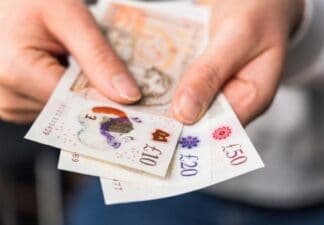One of the many things that I’ve noticed amongst the current market chaos is the increase in both the current and forecast dividend yield of the FTSE 100, most notably in the Basic Materials and Oil & Gas sectors, as both have taken the brunt of the sell-off — hardly surprising, given the weakness in the prices of basic materials and oil.
Some Basic Calculations
To be fair, the maths is pretty simple:
As the share price of a dividend-paying company reduces, the higher the yield becomes. The ‘yield’, in the absence of any capital gains, is the percentage return on investment for a stock, and normally expressed as a percentage relative to the share price of that company. For example: company A shares trade at 100 pence each and pay a 5 pence dividend. Here, company A would yield 5%. Should the share price fall to, say, 50 pence, then the shares would now yield 10% — not a bad rate of return on your money, especially given the paltry rates that savers can currently get from high-street banks!
But, as is usually the case, it isn’t that simple. It is true, in some cases, that a high dividend yield may be considered to be evidence that a stock is underpriced and ready for a re-rating. Sadly, the alternative could be that the company has fallen on hard times and future dividends are at risk of being cut. Here, investors suffer the pain of a cancelled or reduced dividend yield, coupled with a weak share price as management try to fix the balance sheet, and often the business itself. In short, it pays not to rush in.
A Couple of Bumper Yields Heading for the Chop?
One of the ways that investors can screen for the potential of dividend cuts on the horizon is the level of dividend cover.
Today, I’m taking a look at BP (LSE: BP) and Royal Dutch Shell (LSE: RDSB), two of the biggest constituents of the FTSE 100, and the 3rd and 6th biggest forecast dividend yields respectively on the index. Both are forecast to yield over 7% at current prices.
So, why am I not filling my boots? After all, a yield in excess of 7% shouldn’t be sniffed at. While I can’t argue that the yield that may be generated from these shares isn’t attractive, I do have a couple of concerns:
- Firstly, the level of dividend cover. According to figures from Stockopedia, Shell’s dividend for the year ending 31.12.15 is proposed to be covered 1.07 times by earnings. BP’s cover is expected to be worse at 0.90 times earnings – this means that the company will need to either borrow or make savings elsewhere;
- Secondly, there has been significant weakness, not to mention volatility, in the price of oil, the effects of which have seen several players go out of business. Though I don’t expect either of these vertically integrated players to run into the problems that we have seen with Afren recently, investors need to be aware that both businesses will suffer should oil slip as low as $20, as recently intimated by Goldman Sachs Group. Clearly, this would put the pay-out at serious risk.
Not All Doom and Gloom
All that said, neither of these oil behemoths is indicating that they are going to cut their dividend any time soon. Indeed, Shell has paid a growing dividend since 1945 – that’s some track record!
Additionally, investors can take heart from the fact that both of these oil majors are trading close to book value. That could mean that larger peers like Chevron could come calling with an offer for either company, although I would caution against buying shares in a company on the basis that it may be taken over…







